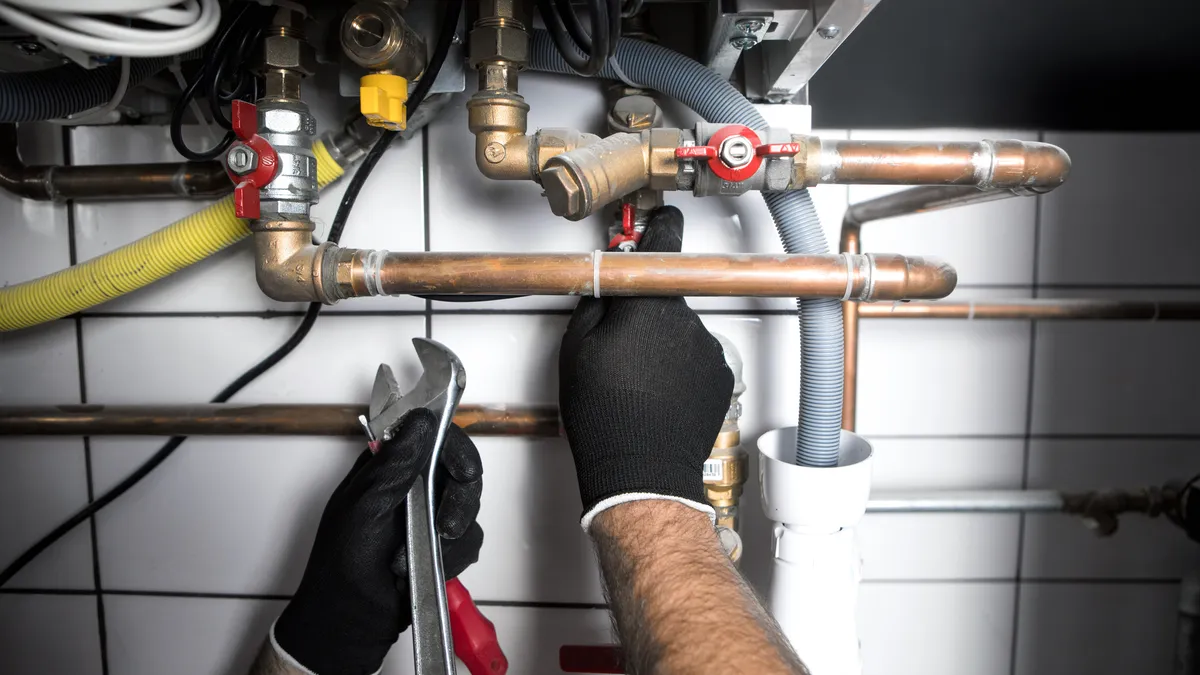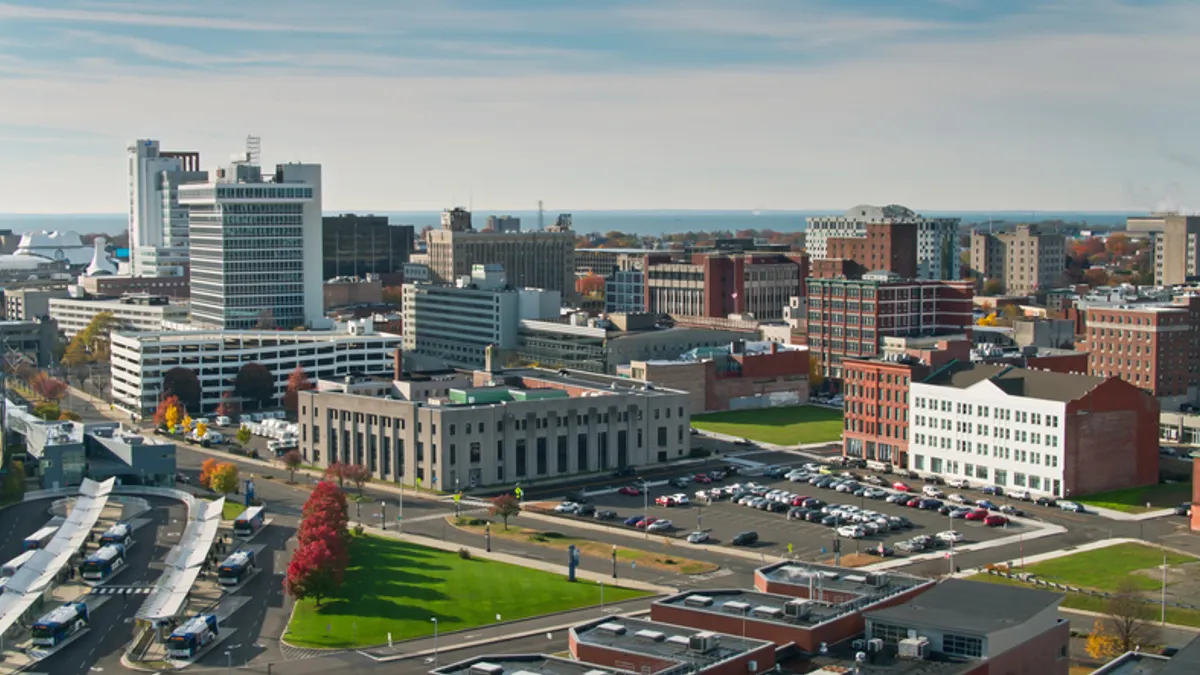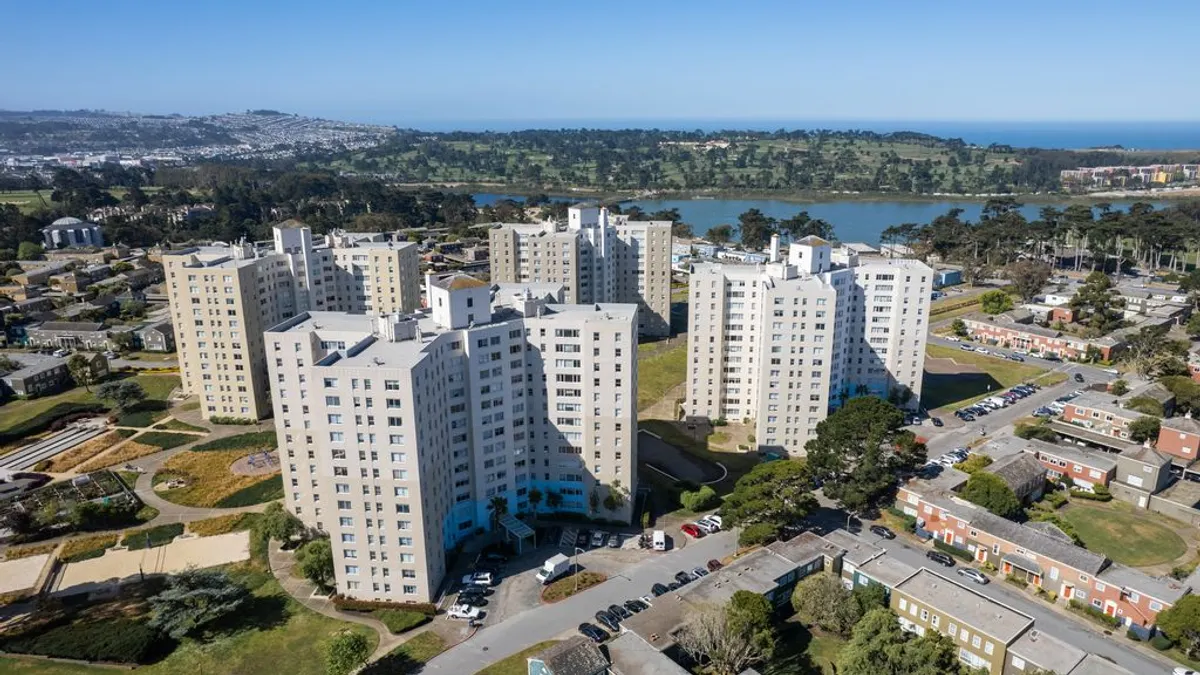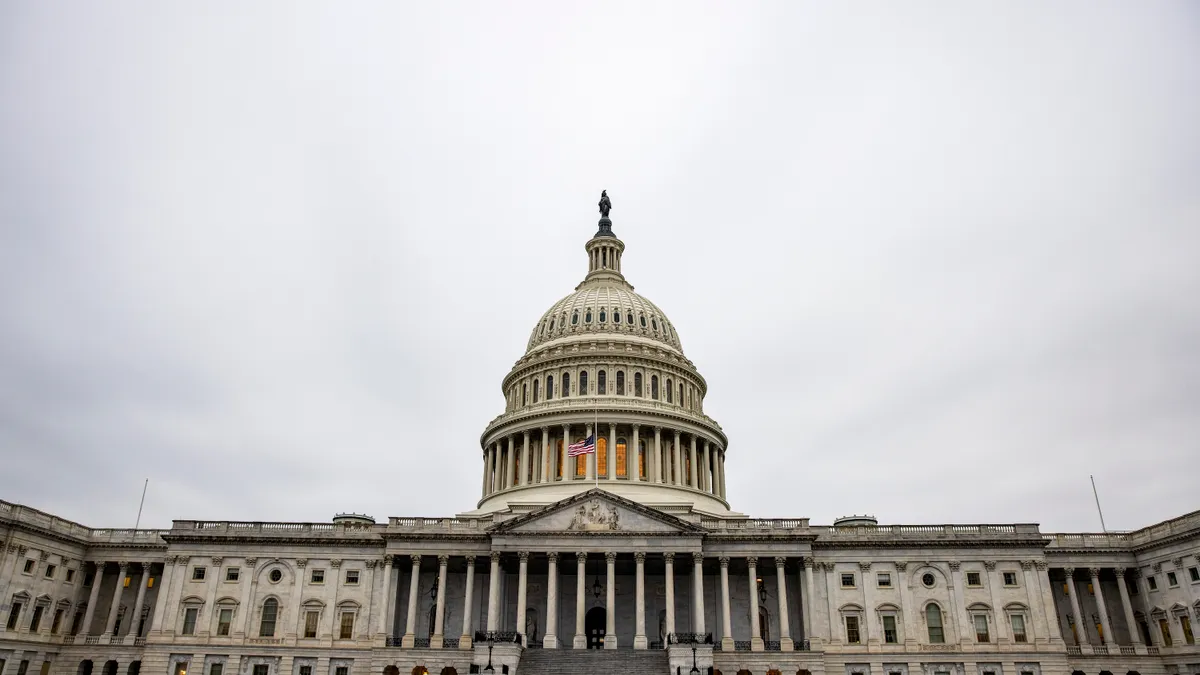The nation’s housing affordability crisis continues to persist, with home prices and rents remaining above pre-pandemic levels. At the same time, 45% of homes in U.S. metropolitan areas have at least one health or safety hazard, like lead paint, broken windows, leaky pipes, exposed electrical wiring, pest infestations or broken heating and cooling systems.
When the shortage of affordable housing runs up against the shortage of safe, quality homes, low-income people may be forced to risk health and safety for affordability, experts told Smart Cities Dive. Municipal home repair programs across the country aim to mitigate that risk by fixing up old, damaged or unsafe homes, but a “gaping need” still exists for programs that improve housing quality, said Sophia Wedeen, a senior research analyst at the Harvard Joint Center for Housing Studies.
Passed in 2022, Pennsylvania’s Whole-Home Repairs Program funds county offices to offer wide-ranging home repair services. However, overwhelming demand for the program reveals the prevalence of low-quality housing, a problem that researchers say is reflected nationwide.
Nearly 6.7 million U.S. households live in homes that are considered inadequate, according to the Census Bureau. Housing inadequacy, as defined by the Department of Housing and Urban Development, is based on the presence of water leaks, exposed wiring, unvented heating units, lack of electricity or running water and other problematic housing conditions.
Many of these homes are older — like in the Philadelphia metropolitan area, where many houses were built more than 100 years ago. However, housing quality is “not just about how old the house is,” Wedeen said, but also whether the owner, landlord or renter can pay for upkeep.
Low-income homeowners and renters are more likely to live in poor-quality housing because they don’t have the money for necessary repairs or regular maintenance, she said, or because substandard housing is all they can afford. As a result, these residents are more likely to be exposed to health hazards like lead, mold, asbestos, structural damage and extreme temperatures, which can lead to injury or chronic illnesses like asthma, cancer and cardiovascular disease.
Most municipal home repair programs offer services targeted to specific, individual solutions like weatherization, accessibility improvements or structural improvements to improve health and safety, said Wedeen. They may be federally funded by the Department of Housing and Urban Development’s Community Development Block Grants or by the Department of Energy’s Weatherization Assistance Program. But not all cities will have programs run by local government agencies or nonprofits to repair every issue. When cities do offer home repair services, said Wedeen, eligibility criteria and funding tend to vary by program.
“Depending on where you live, your city may be better equipped or less well-equipped to help you,” said Wedeen. But Pennsylvania’s Whole-Home Repairs Program, which Wedeen said is the first statewide program of its kind in the U.S., funds a wide array of home-repair services for low-income homeowners and renters. Services may address broken furnaces, inaccessible stairs or even fund the addition of solar panels when repairing a crumbling roof.
The flexibility of the funding is due to the program’s focus on “holistic” housing repair, said Alon Abramson, director of residential programs at the Philadelphia Energy Authority.
Philadelphia, which has a poverty rate nearly double that of the U.S. average, started a pilot home repair program in 2021 called Built to Last, off of which the statewide Whole-Home Repairs Program was modeled, Abramson said. Instead of residents applying to multiple programs, they can apply only to Built to Last — now operating in part with Whole-Home Repairs Program funding — and be considered for multiple home repair programs at once. In this way, Built to Last addresses utility affordability, health and safety, energy efficiency and accessibility all at once.
Residents experience a “holistic intake process” to determine Built to Last’s next steps, said Abramson, whether that means installing air conditioning, fixing broken sewer lines or removing mold. “From [a] client’s perspective, you are not necessarily seeing this as provided by five different agencies, but as home repair delivered for you,” Abramson said.
Yet because of high demand, Philadelphia’s home repair program so far has been overwhelmed, leaving many applicants on long waiting lists.
Abramson said a priority for the energy authority is building program capacity and fundraising, as there is simply more need for home repair than the program can immediately address. By the end of this fiscal year, the energy authority hopes to have repaired 150 homes, Abramson said, served largely on a first-come, first-served basis. After that, he said, the plan is to grow the program by 100% each year.
On the other side of the state in Pittsburgh’s Allegheny County, demand for the state’s Whole-Home Repairs Program has also been overwhelming.
Dan Sullivan, housing stabilization program manager at nonprofit Action Housing, which operates the Whole-Home Repairs Program for the county, said that the program received more than 4,000 applications over a 30-day application period last summer. Rather than taking on the clients who applied first, the county has used an algorithm to first prioritize and then randomly select those with the greatest need based on income, neighborhood, requested repair and other factors.
Since last September, the county’s repair program has served roughly 150 households, Sullivan said, with at least 50 more projects slated for completion by early fall. When these projects are completed, Action Housing will have served roughly 5% of applicants, as state funding set aside for Allegheny County’s program has all been obligated, Sullivan said.
The Whole-Home Repairs Program was initially funded with $125 million in American Rescue Plan Act funding, but the program was not renewed due to the latest Pennsylvania budget impasse last year. However, the governor did include $50 million for the program in his recent budget proposal. But even without state funding, Sullivan is optimistic about combining multiple, smaller funding streams, like federal grants for decarbonization, to ensure the program continues without interruption.
After all, home repair programs are “absolutely the number one starting point for any community revitalization program,” Sullivan said. “It's impossible to reinvest in a community with job creation and educational advancement if [residents] don't have a safe place to live and an affordable place to live.”




















